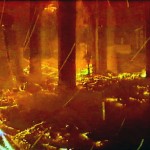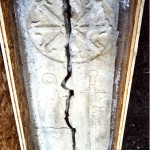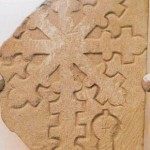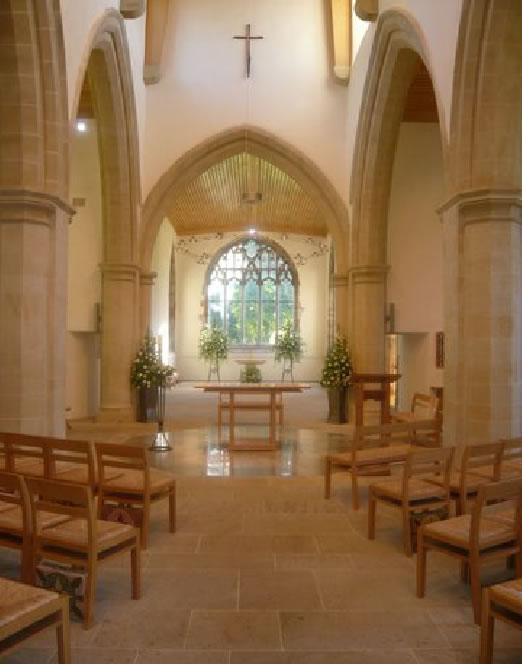 In 1998 raging fire devastated the interior of thousand-year-old Saxon church St. Brandon’s in Brancepeth, England. Temperatures reached 1200° Celsius at the height of the conflagration, melting the lead from the roof and virtually vaporizing the beautifully carved wooden interior.
In 1998 raging fire devastated the interior of thousand-year-old Saxon church St. Brandon’s in Brancepeth, England. Temperatures reached 1200° Celsius at the height of the conflagration, melting the lead from the roof and virtually vaporizing the beautifully carved wooden interior.
The massive oak beams from the roof were the only remaining wood, and they too were so charred they may or not be datable via dendrochronology (tree ring dating).
Amidst the tragic loss, something wonderful was found: more than a thousand medieval gravestones stored in the walls of the church hundreds of years ago.
 Cross slabs are the size of a coffin lid and are engraved with full-size crosses as well as designs indicating the profession or status of the deceased. A housewife is represented by shears, for instance, a priest by a chalice, a knight by a sword, a scholar by a book. Several of St. Brandon’s cross slabs include symbols not found anywhere else, like an intricate 5-point cross.
Cross slabs are the size of a coffin lid and are engraved with full-size crosses as well as designs indicating the profession or status of the deceased. A housewife is represented by shears, for instance, a priest by a chalice, a knight by a sword, a scholar by a book. Several of St. Brandon’s cross slabs include symbols not found anywhere else, like an intricate 5-point cross.
It was common practice at the time to reuse old stone from elsewhere in the church to reinforce the walls, so many of these cross slabs were used as internal lintels for the clerestory windows.
 They weigh up to half a ton each and they date from between 1100 and 1300 A.D. A local historian thinks they might have been intentionally secreted in the clerestory to keep them safe from Puritan reformers.
They weigh up to half a ton each and they date from between 1100 and 1300 A.D. A local historian thinks they might have been intentionally secreted in the clerestory to keep them safe from Puritan reformers.
Jim Merrington, of the Brancepeth History and Archive Group, explained: “After the roof burned off we discovered a ring of cross slabs high up around the perimeter of the clerestory which was built in 1638 by Rector John Cosin, who later became Bishop of Durham. All were neatly placed facing skywards. It is possible that Cosin had them gathered up from the churchyard and secreted them away on the very top course of the building safe from vandals and reformists. It was obviously quite a task to get them up there for no real structural purpose.”
Archaeologist Peter Ryder said the collection of cross slabs was the biggest in the North, and possibly the second largest in the country after a collection at Bakewell, Derbyshire.
Twenty of the cross slabs are now on display on the church walls. Another 40 will be exhibited at nearby Brancepeth Castle.
